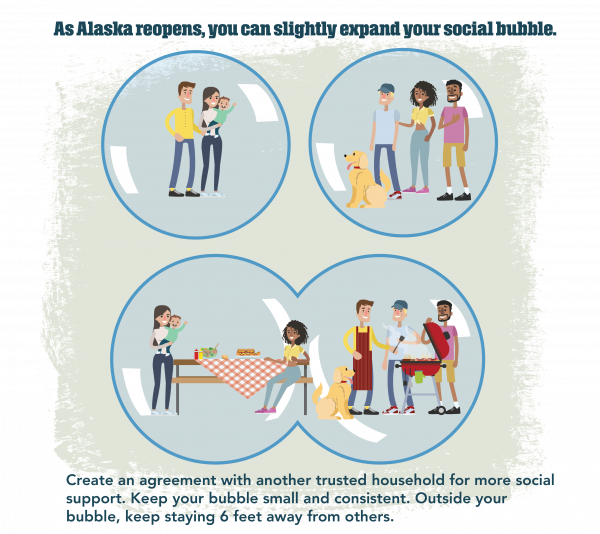
As the coronavirus pandemic presses on, school districts across the country are spending the summer figuring out what classes may look like in the fall.
The Anchorage School District presented proposals for fall scheduling and instruction to the school board that brings some of their plans into view.
When can we expect a final decision about these plans?
Keep in mind, these are simply proposals so things could change between now and the start of school. There are many people involved in trying to figure this out, but the district said they plan to present a detailed schedule in July. See more about ASD’s school start plan here.
Related: Here’s how the Anchorage School District will create a plan to restart school this fall
How will the district determine a schedule for the fall?
The school board already passed a proposal from the district to change the school calendar. School will begin on August 20, rather than August 18, in order to give teachers more time to prepare and accommodate municipal elections that will be held on August 18 in school locations. A full draft of the revised school calendar can be found here. The calendar must be approved by the state department of education.
During the school year, the district also proposed a scheduling matrix for school days based on different public health factors and risk levels.

Risk levels are determined in part by guidelines from the state education department ‘Alaska Smart Start 2020 framework.’
A low-risk level is defined in the framework as “No community transmission.” A medium-risk level is defined in the framework as “Some community transmission.” A high-risk level is defined in the framework as “Widespread community transmission.”
Based on current conditions, Superintendent Deena Bishop said at the school board meeting June 16, the district is operating under a medium-high risk scenario.
How will will decide which students go to school in person and which don’t?
The district says students will be divided based on their last name, so everyone with last names starting with A-L, for example, might go and the rest stay home. But that detail has not been provided yet. It’s unclear which part of the alphabet will get to go but that’s how students will be divided.
How will the district approach student learning?
There are many different models that schools around the world are trying. ASD said they’ve looked at a lot of them. And they’ve settled on what they’re calling a cohort/quarter model.
Essentially, rather than a semester system, with a fall and a spring semester, the district will move to more of a trimester system at the middle and high school level where students take classes in 9 week blocks.
The district said this will allow teachers to teach fewer classes at a time. They’ll be teaching four classes at a time instead of six or seven.
The change is in response to one of the biggest complaints teachers and families had about shifting to online learning: That six or seven classes were simply too many to take online at one time.
So, heading into a situation in the fall where there will blended learning with both remote and in-person classes, having fewer classes at a time will be easier to manage, ideally.
That’s the “quarter” part of the cohort/quarter system. What’s the “cohort” part?
This is how the district is trying to minimize the amount of physical interaction that students, teachers, employees, etc. have with each other inside a building.
At the elementary level the idea is to keep classes as self-contained as possible. And for electives like art and music, for example, an art teacher might be assigned to work with kindergarten students for that quarter and then could move on to first graders the next quarter. So, rather than having every student in the school cycling through the art classroom every day, each cohort will get a designated amount of time with that specialist.
The district said, individual schools will need to figure out their own unique schedule based on the number of specialists they have.
At the middle school and high school level, they’re hoping fewer classes at a time means fewer passing periods with students mingling in hallways and less travelling between classes.
Similar to the bubble analogy – the cohort model is all about trying to minimize the number of people coming in and out of your bubble.

The district is also planning to stand up a virtual school. For families who don’t want anyone coming into their bubble, there will be a virtual or online K-12 school available from the Anchorage School District.
"come" - Google News
June 29, 2020 at 11:08PM
https://ift.tt/3g8WLBL
Anchorage School District reopening plans for fall start to come into focus - Alaska Public Media News
"come" - Google News
https://ift.tt/2S8UtrZ
Shoes Man Tutorial
Pos News Update
Meme Update
Korean Entertainment News
Japan News Update
Bagikan Berita Ini














0 Response to "Anchorage School District reopening plans for fall start to come into focus - Alaska Public Media News"
Post a Comment